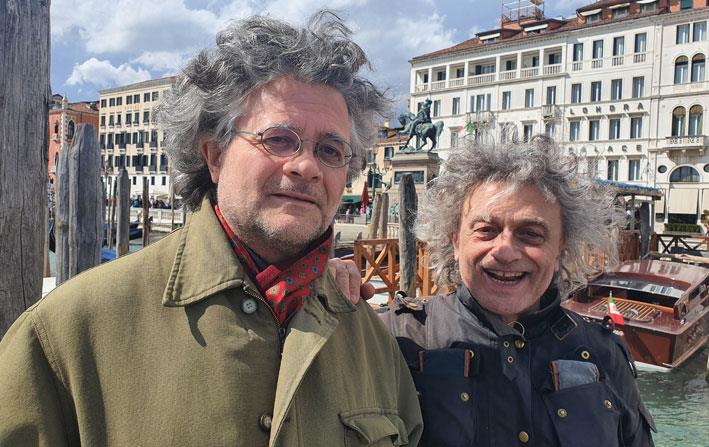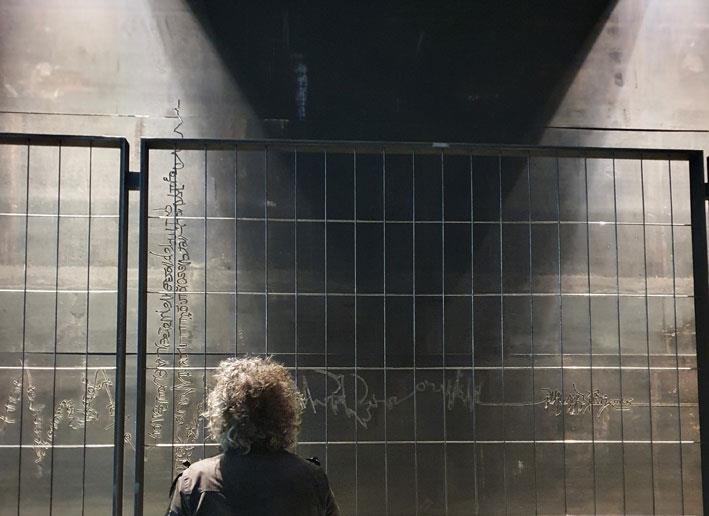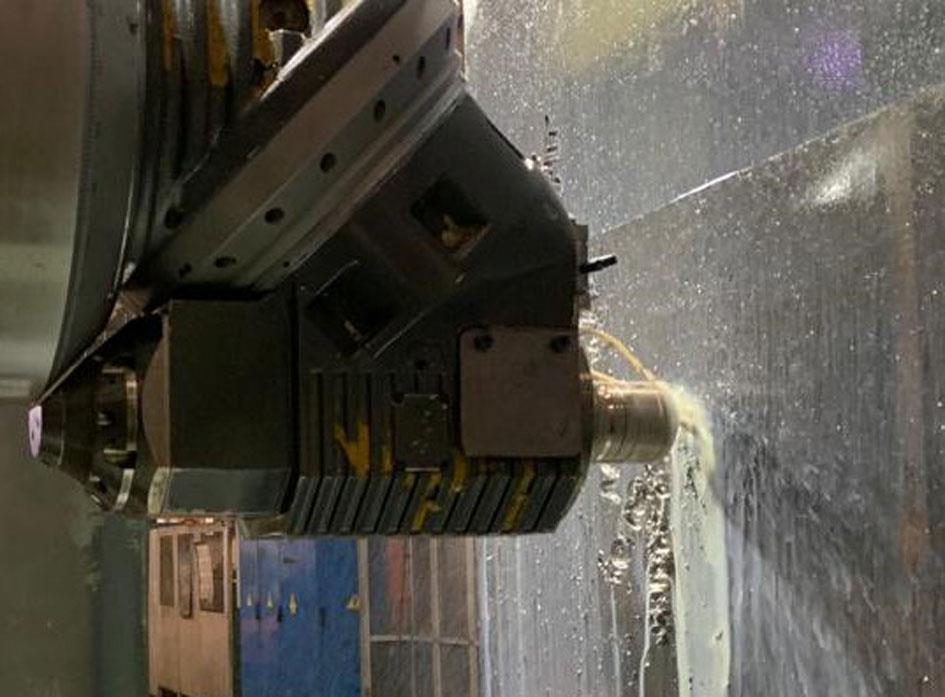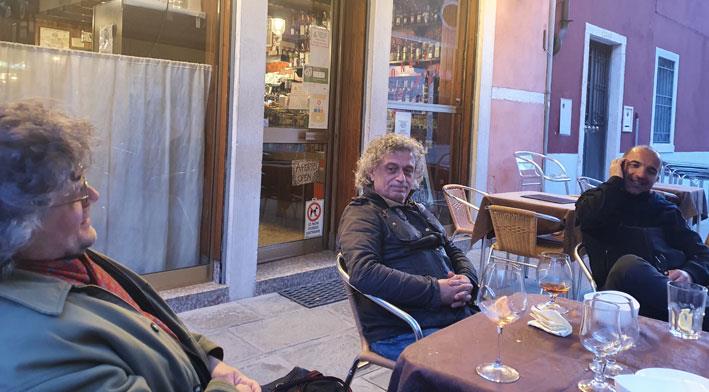Besides being an artist, you are also known for your work as a theorist, professor, writer and artistic director. How have you found collaborating, as an artist, with Arcangelo Sassolino and Brian Schembri on Diplomazija astuta?
It was great working with both artists, in spite of the fact that, and this may come to a surprise to some, Brian and I do have drastic differences in our approach, to put it mildly. We disagree on almost everything artistically, with the exception of defending and maintaining artistic quality. We are very close, intimately close, but artistically we are worlds apart. I am anarchic. He is conservative in the sense that he considers himself a medium of the work, thus prohibiting him to deal with it otherwise. I deeply treasure his advice which is now entering its 60th year. There are no compromises in his work, and I love him for this. We don't agree on the application of artistic categories, but notwithstanding this his artistic strength is phenomenal.
How did you get involved with the project, Diplomazija astuta?
I am actually very cautious about collaborating with others. I have collaborated on exhibitions only a couple of times throughout my career and quite regretted it afterwards. I only collaborate if I have a truly intimate reason to do so. In fact, before the Diplomazija astuta project I was invited to propose my own project for the Venice Biennale. I declined. However, when Keith Sciberras, team leader and co-curator for the project, explained his concept and invited me to join, I knew I had to do so. He showed me Arcangelo's bozzetto which triggered a spark in me, a spark hidden throughout my years of artistic development, which is the concept of 'faktura'. This concept formed part of my artistic praxis for many years, and also still forms part of my ongoing academic research.
'Faktura' is the tangible relationship existing between any artist and the chosen materiality of creation. This excited me intensely and I felt that this might be my perfect chance, at last, to challenge and deal with this other contemporary art category that became dominant during the twentieth century, particularly in its first decades.
What did you hope to explore?
With my 2007 Caravaggio series, also curated by Keith Sciberras, I attempted to tackle my materiality question by creating works utilising metal, copper, paper and wood as my primary materials. This material revolution in art was happening throughout the twentieth century, and not only in Europe, as can be witnessed in the development of the Casablanca School of Contemporary Art and in many other non-European artistic hubs. Consecutively, as always happens within the creative process, another question arose. Was I simply following the traditional way of creating but just, merely, replacing the role of conventional materials with modern ones? In the case of Diplomazija astuta there is no traditional creative method involved. My work is essentially a metal sheet, so I had to take up the challenge. I wanted to see what I would do with the metal. In other words, should I interfere, invade, or let it be? And ultimately, would it welcome my invasive incisiveness?
In fact, when I saw the metal sheet I thought it was perfect on its own. However, I wanted to take up the challenge and contextualise it within the world of contemporary art installation. A tumultuous love relationship between the metal sheet, the machine, and myself started to evolve. The machine sometimes flirted, other times elegantly, and at other times not so elegantly, refused my demands and requests, and in due course, as in all sincere love relationships, it succumbed. And for this, as a sign of gratitude, I offered my 'affann' heartbeat as my sacrificial ritualistic act.
Your part of the project is strongly influenced by language. What are you trying to provoke with the inclusion of multiple Mediterranean languages within the piece?
At this point, I would like to thank Mons Dr Edgar Vella and Rev Dr Paul Sciberras for helping me with ancient languages and their corresponding structures.
My first course of action was looking back to my Wettinger project proposal of years gone by. It featured the juxtaposition of all Mediterranean languages chanting Il-Kantilena, the oldest known literary text in Maltese. It dates from the 15th century but was not found until 1966 by the historians Godfrey Wettinger and Mikiel Fsadni. I transposed this idea of a multi-language flow onto Diplomazija astuta.

Giuseppe Schembri Bonaci and Brian Schembri, two souls
My next step was to seriously re-study the 'Beheading'. Through this research I began noticing the radicality of Saint John the Baptist. John is professing the coming of the Messiah, together with the corresponding need for a new society, for a new language, that of love, not fear, the New Testament. A dangerous prophecy for militancy that brought about his beheading.
Finally, I also looked to one of my favourite playwrights, Samuel Beckett. I learnt he came to Malta, due to trouble with his eyesight. In a letter postmarked 30 April 1974, he recounts going to Saint John's Co- Cathedral and with his weak and murky sight he sees the 'Beheading'. In spite his sight-problems, he found it so powerful that he was immediately inspired to write the play, Not I. This tells a tale about a head that spews words and I thought that is the answer to my metal work.
This seems like a deeply conceptual piece which is taking inspiration from various periods and principles. Are you concerned about the work's comprehensibility to the public?
Unfortunately, Maltese archival research and scholarship still lags in conceptual thought which, whether we like it or not, is in fact the prime mover to push ideas forward. It is conceptual thought that gives birth to movements and worldviews which in their turn can create worlds. It is the discovery and rediscovery of concepts that revolutionises the whole development of human society. My work is a creative proof of what I believe to be art's and scholarship's role, that of 'creating' concepts, making the Verbum caro factum est.
Such lack of awareness is often camouflaged by the cry of 'incomprehensibility', which is a pity. We need to export concepts and that is what I am doing, and that is one role the Department of Art and Art History is playing. One should not bypass the fact that the scholarly differentiation of schools, movements and artistic thought is achieved only through conceptual analyses. We understand what Gothic, Renaissance, Baroque, Mannerism, Realism, Impressionism, Cubism, Futurism and others are only through deep conceptual debate and scholarship. And recognition of this takes years and centuries.

The Futile Calling of Giuseppe Schembri Bonaci
When explaining that you view the twentieth century as a century of metal, you referenced several moments of intense violence including massacres and gulags. Are these the injustices you want to see addressed or do you hope other injustices will come to the viewers mind?
Unfortunately, I truly believe that a utopia, within itself, will bring dystopia, and necessarily so. That is the inevitable Shakespearean tragedy. The same can be said with St John the Baptist. Here he is proposing a new utopian society needing a new language, but he is also, unconsciously, heralding a new dystopia alongside it. I am not offering a solution. After World War II and all the atrocious violence that went on, both Celan and Adorno posed the question; how does one dare write poetry in the midst of genocidal massacres and lies? The simple answer is that you cannot. The more we create a utopian dream the more we become beasts and that is the negative beauty of the paradox. It is linked with the whole narrative.

Surgical operation on the heart
Given that you claim the twentieth century was the century of metal, what medium do you think is beginning to define the twenty-first century, if there is one?
Actually, I discuss this question quite often with Brian. I believe that the age of materiality has ended at a moment when, paradoxically enough, materialism has become the dominant characteristic of humankind's existence. If you see the new technology being exploited in contemporary times, one can witness how it completely disconnects itself from the process, from a physical and material perspective. What a protracted process from the handwritten calligraphic truth to today's cut-and-paste emailing meaning nothing. This would soon lead to a tempestuous debate about the whole idea of 'faktura' in the present virtual-computerised reality.
This does make me feel lucky that I got to be 'crowned' as one of the last of the Mohicans.
When working on another exhibition inspired by Caravaggio over a decade ago you claimed to enslave yourself to Caravaggio. Could you extrapolate what that means to you and do you feel you are enslaving yourself again?
That was in reference to an exhibition I worked on with Keith Sciberras as the curator. Even though I am not a fan of the term now, admittedly, I did enslave myself to it in the sense that I used my own blood as a part of the medium materiality. The present inclusion of my heartbeat in the work of Diplomazija astuta is another version-echo of this.

Post-operation
The curatorial team for the Malta Pavilion comprises curators Keith Sciberras and Jeffrey Uslip, kinetic artist Arcangelo Sassolino, theoretic artist Giuseppe Schembri Bonaci, musician and composer Brian Schembri, and project managers Nikki Petroni and Esther Flury.
The curatorial project Diplomazija astuta will represent Malta at the 2022's Biennale di Venezia international art exhibition. The Venice Biennale will be open to the public from 23 April 2022 to 27 November 2022. The Malta Pavilion is commissioned by Arts Council Malta, under the auspices of the Ministry of National Heritage, The Arts and Local Government.